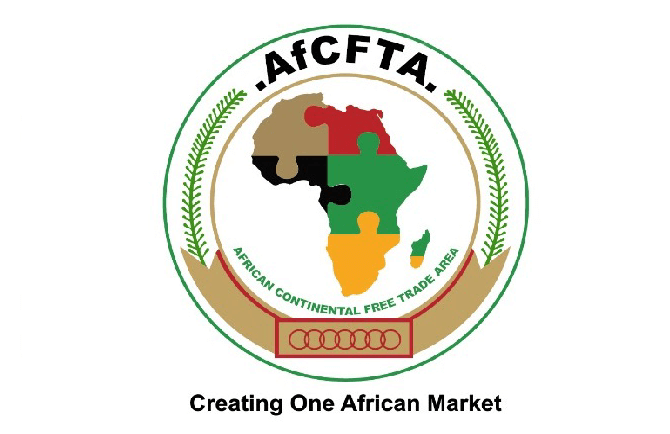On New Year’s Day 2021, a historic chapter unfolded for Africa as the African Continental Free Trade Area (AfCFTA) officially commenced. The agreement, signed by 54 African nations, aims to create the largest free trade area in the world, uniting over 1.3 billion people and a collective GDP of $3.4 trillion.

Image: www.researchgate.net
The AfCFTA’s vision is to boost intra-African trade, eliminate barriers to trade, and foster economic growth. By creating a single market for goods and services, the agreement seeks to:
Benefits of the AfCFTA
The AfCFTA offers a myriad of benefits for African countries and businesses, including:
- Increased Trade: Elimination of tariffs and trade barriers will facilitate the flow of goods and services, expanding market opportunities for African businesses.
- Economic Growth: Increased trade and investment will stimulate economic growth and create jobs.
- Diversification: Reduced trade barriers will enable African countries to diversify their economies by exporting a wider range of products.
- Improved Infrastructure: The free trade area will encourage investment in transportation, communication, and energy infrastructure, enhancing connectivity and reducing trade costs.
- Enhanced Competitiveness: Increased competition in the African market will foster efficiency and innovation, improving the competitiveness of African businesses on the global stage.
Definition and History
The AfCFTA is a legally binding agreement that establishes a single market for goods and services traded within Africa. It is based on existing regional economic communities, including the East African Community (EAC), the Economic Community of West African States (ECOWAS), and the South African Development Community (SADC).
The idea of a pan-African free trade area has been explored for decades. In 1991, the Abuja Treaty established the African Economic Community (AEC), which included provisions for a free trade area. However, the AEC faced implementation challenges, and its objectives remained unrealized.
Implementation and Challenges
The AfCFTA divides tariff liberalization into two categories: 90% of products will be liberalized immediately, while the remaining 10% of sensitive products can be subject to tariffs for a maximum of 10 years. Non-tariff barriers, such as regulatory differences and technical barriers to trade, are also being addressed through harmonization efforts.
The implementation of the AfCFTA faces several challenges, including:
- Infrastructure Deficiencies: Inadequate transportation, energy, and communication infrastructure can hamper trade and increase costs.
- Non-Tariff Barriers: Technical barriers to trade, such as differences in product standards and regulations, can hinder the flow of goods and services.
- Asymmetrical Development: Wide disparities in economic development between African countries can create uneven benefits from the free trade area.

Image: www.theafricandream.net
Tips for Businesses
Businesses that embrace the AfCFTA can reap significant benefits. Here are some tips:
- Identify Market Opportunities: Explore the AfCFTA’s single market to find new opportunities for your products and services.
- Comply with Regulations: Familiarize yourself with the rules of origin and other regulations to avoid trade barriers.
- Build Relationships: Establish connections with businesses in other African countries to expand your reach.
- Utilize Government Support: Seek assistance from government agencies and trade organizations to navigate the AfCFTA’s processes.
- Invest in Capacity Building: Invest in training and resources to enhance your business’s capacity to compete in the larger African market.
Conclusion
The Africa Continental Free Trade Area represents a transformative opportunity for economic development in Africa. By eliminating trade barriers, fostering competition, and promoting investment, it will unlock Africa’s potential and create a brighter future for the continent. It is imperative that businesses and policymakers alike embrace the AfCFTA’s vision and work together to maximize its benefits.
Are you interested in learning more about the AfCFTA and its impact on Africa?
Africa Continental Fee Trade Area
FAQs
- Q: What is the goal of the AfCFTA?
A: To create a single market for goods and services, boosting intra-African trade and economic growth.
- Q: How many countries have signed the AfCFTA?
A: 54 African nations have signed the agreement as of January 2023.
- Q: What are the challenges facing the implementation of the AfCFTA?
A: Infrastructure deficiencies, non-tariff barriers, and asymmetrical development.
- Q: How can businesses benefit from the AfCFTA?
A: By identifying market opportunities, complying with regulations, and investing in capacity building.
- Q: When did the AfCFTA officially commence?
A: January 1, 2021.






